Edinburgh is supposedly ‘a mad god’s dream’, but even the maddest god couldn’t have dreamt up a more dramatic history.
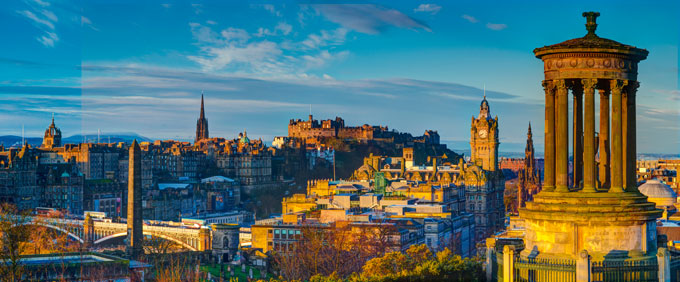
With its imposing castle set atop a volcano and cobbled historic old town, few visitors ever forget their first sight of Edinburgh. Scotland’s magnificent capital does not so much wear its history on its sleeve as overflow with intoxicating tales of medieval villains, feuding warlords and all manner of royal intrigue.
Edinburgh today, though, is also the capital of a modern nation that now has its first parliament in 300 years.
A new sense of confidence has spiced up and injected more fire into the very heart of the Scottish capital, adding even more richness to its fascinating historical charm.
Edinburgh’s story is inexorably intertwined with its natural landscape. The city lies at the mouth of the Firth of Forth, the deeply strategic waterway that connects Scotland’s historic heartlands around Stirling (the land of William ‘Braveheart’ Wallace and Robert the Bruce) with the North Sea. It is an urban oasis laden with natural drama, from its rugged hills and craggy volcanoes, through to the Forth and the Water of Leith, a truly special place where the ever-changing weather conditions constantly shift the city’s hues and moods.
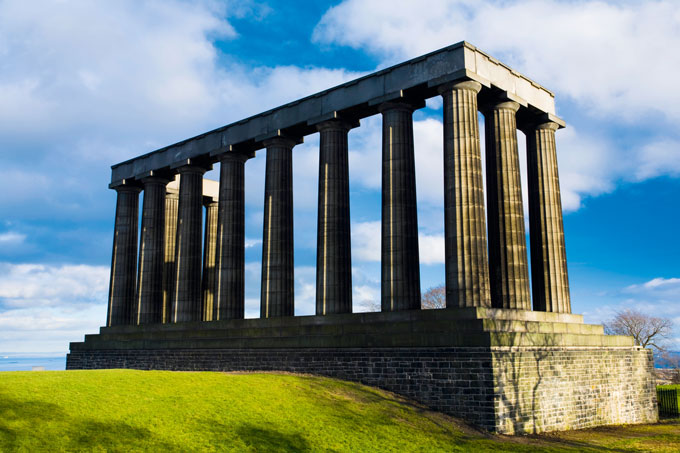
A treasure trove of archaeological finds has shown that Bronze Age tribes once eked out a living around Edinburgh and that the Romans set up camp here too. It was not until the Middle Ages, though, that Edinburgh – the modern English name comes from the first hill fort on the site of Din Eidyn – started to rise to greater prominence, with the Castle Rock serving as Scotland’s southern bulwark.
Edinburgh’s growth accelerated over the centuries. In the 11th century Malcolm Canmore (King Malcolm III of Scotland) designated Edinburgh a royal burgh, then in 1128 King David I established an abbey at Holyrood. Perhaps even more significantly in 1329 Robert the Bruce granted a new charter that brought the Port of Leith, the largest enclosed deepwater port in Scotland, into the fold.
Edinburgh rode the crests and hollows of the tumultuous relationship between Scotland and England over the next 500 years. Under King James IV of Scots Edinburgh basked in Renaissance glory, while the reign of King Henry VIII in England brought about the sacking of the city. The Act of Union in 1707 effectively created Great Britain as it is today and for three centuries Edinburgh was a capital city without a parliament. All that changed in 1999 when political devolution brought a sparkling parliament building and the city hasn’t looked back since.
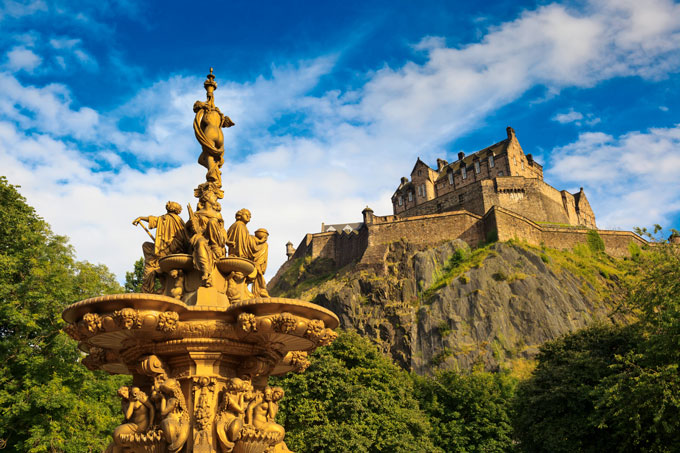
All of the tribes, civilisations and cultures that have breezed through Edinburgh over the centuries have left their indelible traces. There is the old Roman fort at Cramond, Pictish sites and Gaelic legacies, as well as, of course, the more modern Scottish and British cultures that have given the city its world-renowned architecture.
History is so thick in the air in Edinburgh that you can feel it. Delving into the Old Town is like leafing through the pages of a dusty historical novel as each era unfolds with its own legends and tall stories. One of the most nefarious tales is of the duplicitous deeds of cabinet maker Deacon Brodie. A respected man of high society by day but a devious burglar by night, Brodie was eventually hanged for his crimes. The story goes that the gallows used were of a new type introduced by Brodie himself.
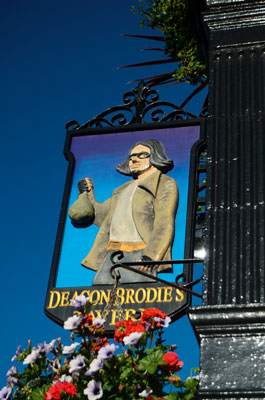
Another soul to meet her fate on the gallows was Maggie Dickson. This local lassie was hanged for being a witch. When the motion of the cart carrying her body revived her on the Old Town cobbles she was hanged again as prosecutors decided her initial survival meant she was indeed a witch! Even more sinister were Burke and Hare, the notorious ‘bodysnatchers’. When they ran short of dug up corpses to supply the local surgeons’ insatiable hunger for cadavers to dissect they cut out the middlemen and started killing innocent people.
Unsurprisingly Edinburgh is known as a city of ghosts, where stories like these are evocatively spiced up on popular ghost tours through the warren of Old Town narrow cobbled lanes or ‘closes’. Alternatively you can just enjoy them in the local pubs, with watering holes dedicated to Deacon Brodie, Maggie Dickson and Burke and Hare.
Edinburgh’s dramatic castle enjoys an unparalleled location. Proudly perched on an extinct volcanic outcrop, it has panoramic views over the rambling Old Town – which has preserved its medieval street plan – and the stately order of the New Town, often considered to be a masterpiece of city planning. Both old and new have been recognised on UNESCO’s World Heritage list.
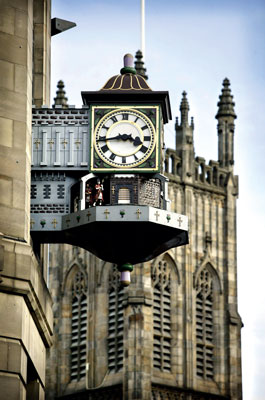
On a clear morning the vistas you can savour stretch out even further: north towards the rugged mountains of the Highlands, south towards the once wild border country with England, east out across the pale blue expanse of the North Sea and west towards the old battlefields of Falkirk (1298) and Bannockburn (1314) where the English and the Scots respectively won bloody victories.
Dropping down from the castle ramparts, after exploring its maze of museums and galleries, you can investigate the cobbled Royal Mile. In the early 18th century English writer Daniel Defoe described the Mile as the ‘Finest street for buildings… not in Britain only, but the world’. Today, despite a flurry of souvenir shops, the majestic regal thoroughfare remains breathtaking. As it descends to the Palace of Holyroodhouse (the Edinburgh residence of The Queen) there are a host of attractions such as St Giles’ Cathedral, John Knox House and the Scotch Whisky Experience, not to mention a selection of fine pubs and restaurants.
Edinburgh’s Old Town was not always as salubrious, however. In medieval times it was notorious for being an overcrowded, unsanitary mass of humanity. Seeking a better life the city’s moneyed classes gravitated south across the newly built Mound, which crossed the drained Nor Loch en route to what was in effect a new city.
The chief architect of this ‘Athens of the North’ was incredibly 22-year-old James Craig, who won a design competition to find a suitably modern layout for the new suburb in 1766. A seminal figure who is to Edinburgh what Haussmann was to Paris, he created an oasis in complete contrast to the Old Town. A neoclassical paradise of grand boulevards and green squares, it had the luxury of two wide avenues, Princes Street and Queen Street, that were only built up on one side in order to allow the views to shine through. In this refined world the ground-breaking Scottish Enlightenment ideas of such luminaries as philosopher David Hume, geologist James Hutton and economist Adam Smith flourished, bringing the city even further renown.
Into the 19th century Edinburgh inspired two of Scotland’s greatest ever writers, Sir Walter Scott and Robert Louis Stevenson. Scott’s novels brilliantly conjured up the country around him, as well as bringing alive the Jacobite years of the preceding century. He is commemorated by the Scott Monument, an unmistakable Victorian edifice that straddles the divide between the Old Town and New Town – you can climb up to appreciate both. The stories of Robert Louis Stevenson, whose Jekyll and Hyde novel is largely based on the tale of Deacon Brodie, vividly evokes this city of split personalities and both his work and life come alive at the Writers’ Museum on the Royal Mile.
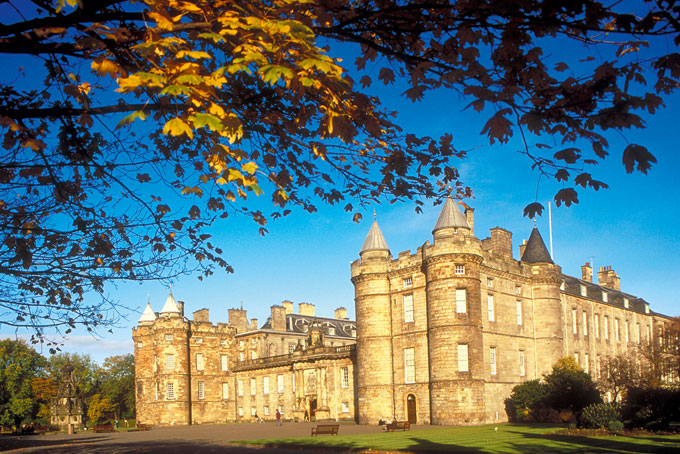
Edinburgh’s cultural scene continues to flourish today. As well as staging the world’s largest arts festival in August, modern Edinburgh (recognised by UNESCO as its first City of Literature in 2004) boasts its own twin literary luminaries in the form of JK Rowling and Ian Rankin. Rowling famously wrote her first Harry Potter novel in the city’s Elephant House café, while fans of Ian Rankin’s fictional Edinburgh detective John Rebus will be delighted to learn the characterful pub he drinks in (the Oxford Bar) not only exists, but is exactly as described in Rankin’s novels.
Edinburgh also boasts a new architectural face in keeping with its renewed role as the site of the modern Scottish Parliament. The parliament building is an avant-garde collage of architectural styles that manages to harmonise with the city’s other grand edifices, while the Weston Link (between the National Gallery and the Royal Scottish Academy) is a brilliant architectural and cultural marriage of two neo-classical buildings.
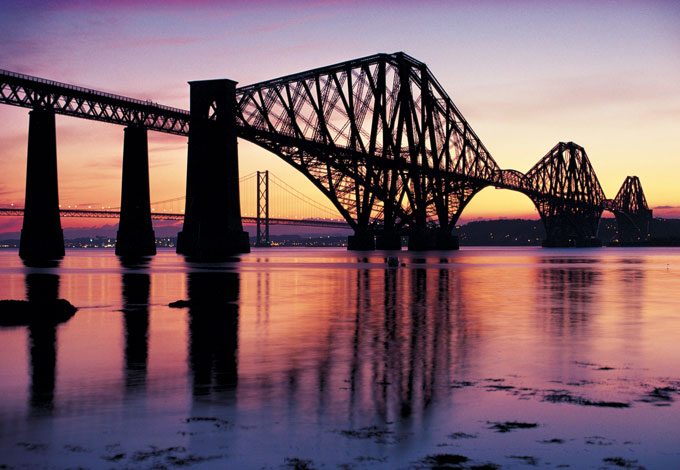
The year 2011 saw the reopening of another innovative union at the National Museum of Scotland as the elegant original Victorian glass atrium was entwined with the sleek sandstone modern annexe. Then there is the designer store-laden Multrees Walk, the centre’s first new street in decades and home to luxury department store Harvey Nichols. Topping it off, 2014 will see the return of trams to the city’s streets for the first time in more than half a century.
Edinburgh’s renaissance is also taking shape down on the once neglected waterfront in Leith, which is now one of the city’s up-and-coming districts. The new Ocean Terminal leisure complex is the star of the old docklands, with its collage of bars, hotels and restaurants, and further restaurants dot the historic waterside at Commercial Quay.
Leith’s highlight is the Royal Yacht Britannia, now permanently moored as a museum by the refurbished waterfront. Edinburgh fought off a host of rival UK cities to become the last resting place of this slice of floating history, which served for four decades as the Royal Family’s private yacht. The success of Britannia’s move has served to further strengthen the appeal of a city that has long managed to seamlessly blend the alluring ghosts of its past with the patriotic energies of its present and future.
Related articlesDownload your Homecoming Scotland 2014 guide |
Click here to subscribe! |





 © 2024
© 2024